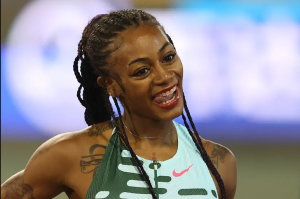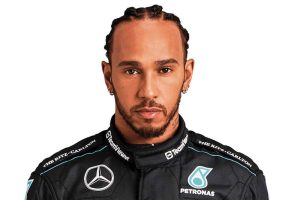
Behind the scenes, the Canadiens are building their defensive structure
Throughout the Montreal Canadiens rebuild, the majority of the spotlight has been on offence. From Nick Suzuki to Martin St-Louis, Juraj Slafkovský to Patrik Laine, the focus has been on how the Canadiens are going to put more pucks in the opposition net. As a result, the Canadiens defence has been forced into the shadows. As the Habs head into the 2024-25 season, there is almost a feeling that the blue-line rebuild is starting anew as Lane Hutson, Logan Mailloux, David Reinbacher, and Adam Engström prepare for prominent roles on the stage. However, the Canadiens have not been idle when it comes to building team defence.
A new type of system construction
One reason that the 2024-25 season feels like a defensive renewal is that the Canadiens do not have an overt system in place. As such, observers cannot see obvious roles for the new kids on the block. However, this reality falls firmly in line with the Canadiens’ tactical modus operandi thus far. Head coach St-Louis’s lack of a formal system is not because he cannot build one (although that does not automatically mean that he can build one either)—but because that is not his priority.
Whether forwards or defenders, the Canadiens have prioritized skills development above all else since 2021. As Jack Han put it back in 2023, “The biggest question facing the Canadiens is “how can we grow as an organization at all positions, on and off the ice? How can we get to a place where all of us are unusually good at our jobs?”
To that end, the Canadiens have spent the last two and a bit seasons identifying what their players can and cannot do as individuals rather than forcing them to master a particular skill set imposed by—and required for—a system. By doing this, the Habs are seeing if they can build a team that can toggle between multiple systems as the game situation requires.

This new approach is not just borne from a desire to copy the high-flying Carolinas and Colorados of the league, but it comes from studying the Canadiens’ own history, and how Alain Vigneault’s New York Rangers managed to stifle the systems of both Michel Therrien (in 2014) and Claude Julien (in 2017). In both encounters, Montreal managed to score two or fewer goals in four of the six games.
Are the Canadiens getting better defensively?
Back in 2023, Han also posited that the team’s final tactical identity would “organically fall into place as the players grow into their roles”, and that the team’s advanced metrics would “naturally improve as the players executing the system improve and grow more accustomed with each other.” On the surface, that has not happened yet. Montreal’s expected goals against per 60 minutes (xGA/60) at five-on-five has barely budged, moving from a 28th-ranked 2.98 in St-Louis’ first year in charge to a 30th-ranked 2.89 last season. Expected goal share (xGF%) fares little better, moving from 45.9% (29th) to 46.4% (26th).
The problem with team averages though is that they are a composite of multiple individual components. Although they tell vastly different stories, a dataset of 70 and 30 yields the same average as one of 51 and 49. The Canadiens, like any other hockey team, will have players who play at the average, players who bring the average up, and players who drag the average down. The important part is whether the players who are expected to contribute to the future are also the players bringing up the average.
Looking at 2023-24, the “right” players are on the correct side of the ledger by and large. Captain Suzuki is a standout at both ends of the ice, bringing down the team average by a full tenth of a goal. For reference, 0.1 goals translates to a three-to-five position difference in the team rankings, and the gap between the first place Minnesota Wild and 27th place Pittsburgh Penguins was 0.48. Kaiden Guhle is right there with him, with Joshua Roy and Arber Xhekaj not far behind. Cole Caufield sits around team average, with Slafkovský, Alex Newhook, and Justin Barron just above.
This, like any individual measure, is not perfect. Michael Pezzetta and Colin White’s reasonably strong impact on team xGA/60 is outweighed by their abysmal xGF/60 production, for example. But it shows that many of the Canadiens’ defensive problems were either an acceptable trade-off or have solved themselves. Sean Monahan’s offensive renaissance may have hampered his 200-foot game, but the sacrifice was worth a payoff that eventually turned into Michael Hage. David Savard, Jake Evans, and Jayden Struble were asked to shoulder heavier minutes than they would otherwise play, and Tanner Pearson is no longer with the club.
Furthermore, this is not just a one-off. Looking at expected goal share (xGF%), Xhekaj, Slafkovský, Barron, Guhle, Suzuki, and Caufield have all shown improvement relative to either their rookie campaigns or from St-Louis’s first year. Their progress has been offset in the team average by declines from Monahan, Evans, Pezzetta, Christian Dvorak, Jesse Ylönen, and Josh Anderson.
A work in progress

The interesting thing is that St-Louis is actually implementing structure into the Canadiens defensive strategy while still primarily focusing on skills development. In 2023, Han noted that “Montreal has doubled down on players who can skate, whether they’re smaller like Lane Hutson or bigger like Kaiden Guhle or Arber Xhekaj.” He later added reach and heft to the list of attributes that the Canadiens’ brass have targeted. Why is this the case? Because the team wants players who can, in one-on-one situations, both “sit on opposing wingers and neutralize breakouts before they materialize” and “win physical battles at the blue line in order to facilitate transition offence.”
Montreal very much wants to be aggressive and end opposition attacks before they begin. This would translate into more offensive zone time for their offensive weapons. The problem is that the execution, as expected, is not there yet—leading to scoring chances and goals against. Nonetheless, Montreal has thus far been determined to stick to their organic process rather than change course and pivot towards a rigid blueprint.
The coaching staff has done a solid job in monitoring their youngsters, identifying (and rectifying or removing) weak points when they arise, and adapting to the dynamic nature of their challenges. The Canadiens are presently by no means a good defensive team, but it is equally deceptive to say that they have shown little improvement over the last three seasons.


